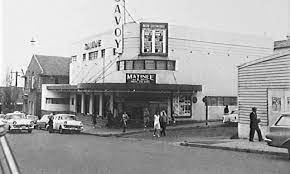
200 Years of History

200 Years of History
The original land grant was to Edmund Bourke in 1821. In 1929 the Council of the Municipality of Wollongong resumed ownership of the land. The laneway was opened up and named William Street. A short time later, with the realisation that nearby Keiraville already had a William Street, Council decided to rename it Globe Street after the popular Globe Club and Theatre standing at the entrance to the lane.
To support the growing local population and busy city centre, Council constructed Globe Lane Rest Park with accompanying CWA Tea Rooms in 1936. Workers and shoppers spent their lunch breaks enjoying the sunshine and gardens, with local bands playing on weekends. Crowds would mill around the rest park on Friday nights to listen to the Steel Works Band. We are proposing to bring greenery back into Globe Lane and Globe Way, along with revitalising the outdoor retail and dining precinct it once was.
Globe Lane plays an important role in our performing arts history, housing an open air picture palace, and then the original Globe Theatre from the early 1900s. In 1936 the famous Henry Boland demolished the existing structures to build a luxurious and ground breaking new cinema the Savoy. The Globe plans to bring this theatre vibe back with more open air community areas like the plaza and open laneways.
In the 1950s, shopper behaviour evolved and the first indoor shopping arcades appeared. The Gateway Shopping Centre construction commenced in 1985 with Grace Bros on the site of the park.
Today, a new generation of visitors has embraced this creative corner of the CBD, with unique small businesses stamping their own personality on the space. You'll find Globe Lane filled with spectacular pieces of street art. Many were painted as part of Wollongong's Wonderwalls Festival. The Globe’s goal is to continue to build on this vibrant, cultural landscape.